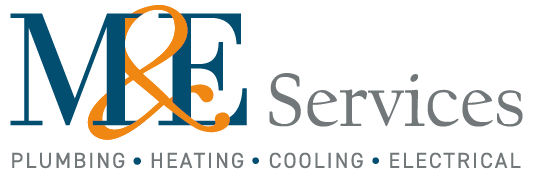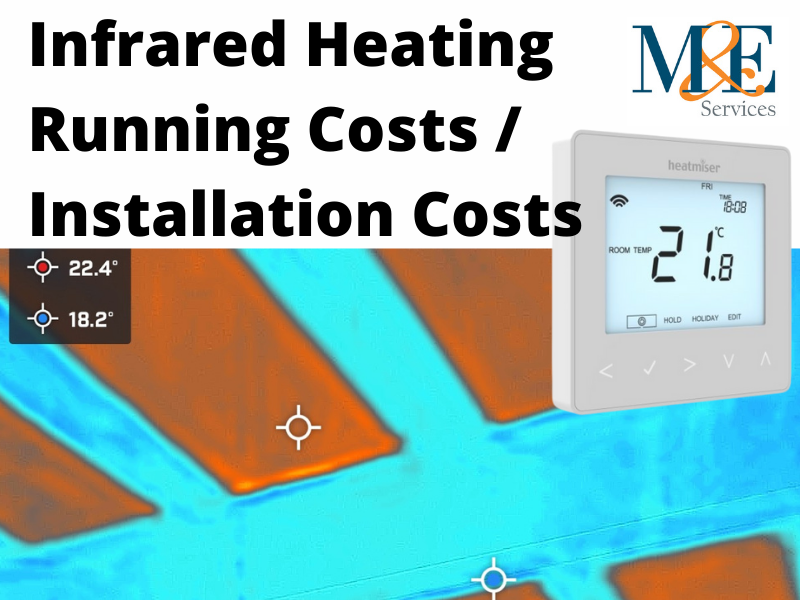Infrared Heating Running Costs
Infrared Heating Installation (Part 3) / Infrared Heating Review / Infrared Running Costs
Note
This write up does not follow the format of the video but has instead been laid out to be more helpful when looking for a specific topic.
In the video, I cover the following items
- The completion of the electrical wiring
- Turning the infrared heating on and show you how long it takes to heat a room
- An Infrared heating problem we encountered
- Infrared heating materials review / AstecTherm review
- Infrared running costs / how much does it cost to run an infrared heating system
The completion of the electrical wiring
The infrared power supply units were the last items to arrive, annoyingly.
When we asked about wiring the system initially, we were told to install 2 individual cables from each mat and take those back to where the infrared power supply units where going to be located. The cable we used for the infrared heating wiring was 2.5mm single core tri-rated cable. This cable cost me around £30 plus VAT from Rexel for a 100 metre drum, so relatively inexpensive.
The first thing what we noticed when the infrared power supplies finally arrived was, of all the single core cables that we were told to install from the foil mats back to the infrared power supply location was, to some extent a waste of time.
The infrared power supply units only had between one to three inputs, pending the output of the power supply. So, to overcome this we had to join up the cables in wago boxes underneath the floor, which meant pulling them back to do this. We then took the required supplies to the power supply unit.
So, as a clearer example if we had 6 cores (3 positive/3 negative) and only one input on the infrared power supply (one positive and one negative = one input), we joined all three positives together and took one positive to the single input, and did the same for the negatives too.
The infrared heating thermostats
We used the heatmiser neostat e V2 as the infrared heating thermostat for each zone. We used the heatmiser neohub along with these, so the customer can control and monitor the entire system from their smartphone. We highly recommend these as these thermostats for infrared heating.
The version “e” means this thermostat is switching mains voltage.
The image below is the thermosat we used on our infrarad heating installation
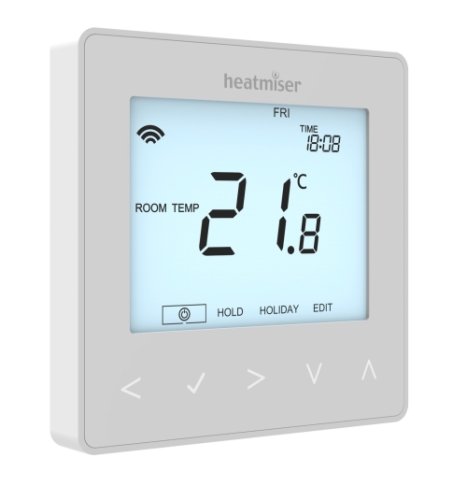
So in this property, we installed eight separate infrared heating zones. So there are three bedrooms, landing, entrance hallway, lounge/diner, downstairs toilet and utility room. Each area has its own individual heatmiser thermostat. To note, the other rooms had existing electric underfloor heating we retained.
Running Infrared Heating with Solar
This property has a solar photovoltaic system, so was perfect for an electric heating solution from the start. The system was installed early on when the feed-in-tariffs were high, so the repayments the customer receives should always offset nearly all of the running costs on this particular infrared heating system until the feed-in-tariff stops. (25 year total)
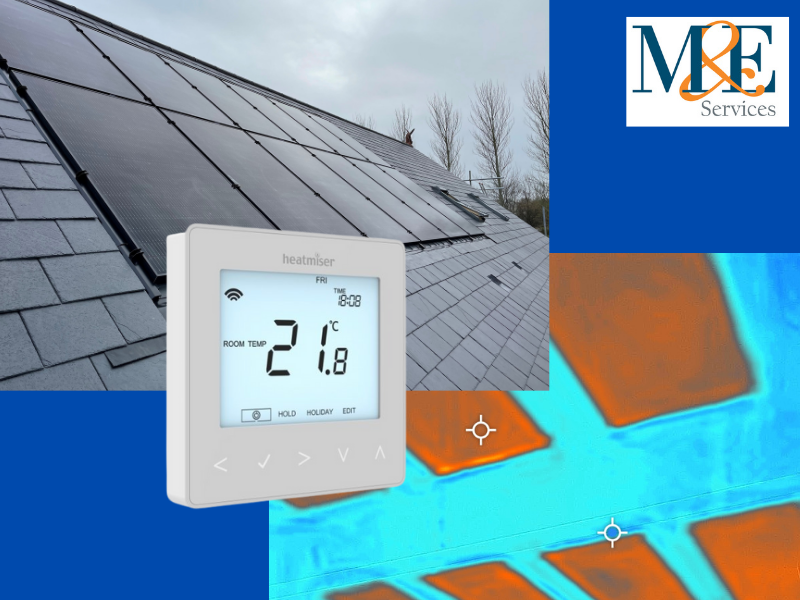
How do I know how much the infrared heating system is costing to run?
We installed a smart meter and have this connected this to the cloud to enable us to record accurate real time energy readings. This smart meter is only connected to the infrared heating system so we can be confident to know precisely how much infrared heating costs to run. We have a mobile sim in the meter and this sends all the data back to the portal. We can measure energy usage down to every 30 minutes, so hourly, daily weekly, monthly and annual usages are now easy to populate with accuracy.
We also had to install a high gain aerial to the energy meter because of mobile phone signal being particularly poor in the area.
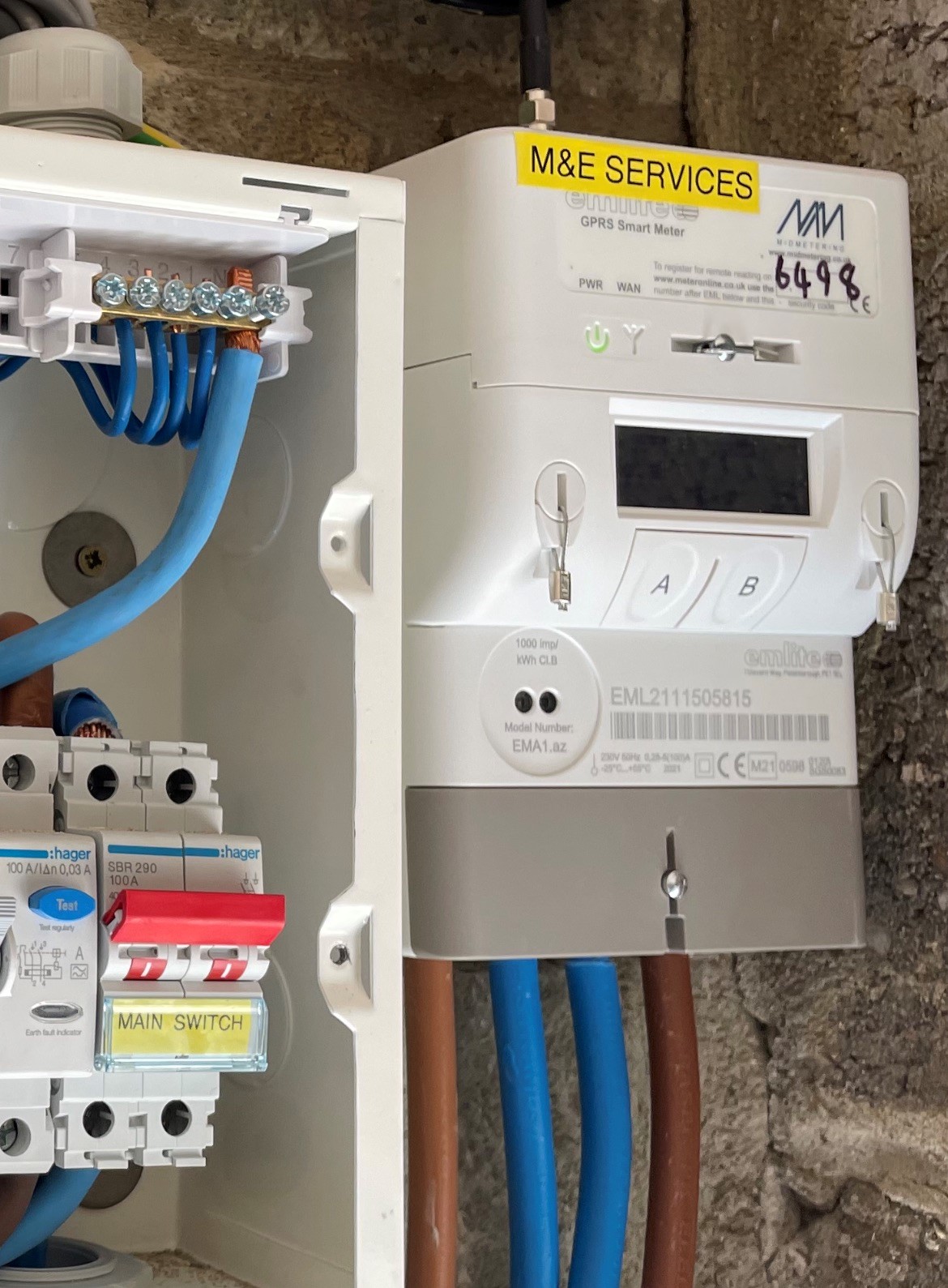
How quickly does an infrared heating system heat a room?
So the next part is where we switched on and tested the system. When you turn up the thermostat the infrared mats in the ceiling take between two and five minutes to appear on the infrared/thermal imaging camera.
We discovered that the infrared heating took several hours to heat the rooms.
AstecTherm Review/Prices
So now we come onto the review of the supplier and the materials for the installation. We purchased this kit from AstecTherm who is an importer of the foil mats and boxes up the system for you. They will design the mat layout for you and are quite quick at returning the quotation details to you.
We went on and ordered a full system kit, which included the foil mats, the cable, the thermostats and the power units. So the entire system kit.
We ordered the kit in July 2021 and had to pay in full for all of the materials, which will be a hefty sum for some to find. We was told everything would be with us within two weeks. So we planned the installation to suit those dates with the client, who had just bought the property and would allow us full access before they moved in, great.
But there were supply problems, 75% of the kit arrived about four weeks later, not the two weeks we were told and had primed everything around with our customers. Consequently the job start date was put back.
As soon as we were given the new date we planned to start again, the kit arrived a couple of days later than this again, but only 75% of the kit arrived. No infrared supply units arrived. We discovered these were actually being made in the UK and this was the part that let the process down.
Receiving the power supply units were very painfully slow with the last power supply unit arric=ving approximately taking a total of eight weeks from our order. So the duration was painful and I’m sure there were good reasons for it, but there was quite a lot of frustration trying to get the last bits of the kit. I would imagine this may well have improved by now and we were just unfortunate. When we had paid put a few thousand pounds for the materials with a view of being paid for the installation relatively quickly after our anticipated installation, this could cause major issues for some.
So the component parts.
Infrared Heating Mats
The infraread heating foil mats were delivered rolled up and numbered to match the intitial design drawing. So the design drawing tells you what numbered mat goes in what room.
Cable
We received six rolls of cable, so 600m. This was based off their design. It wasn’t enough. What I recalled was that we wasn’t asked where the infrared power units were being located and how long the runs were, maybe a little slack on both sides in hindsight.
The cable isn’t stocked at every electrical wholesaler, but we did find it in readiness at Rexel, a national electrical wholesaler. So we was able to get over that hurdle okay.
The Infrared Heating Thermostats
The heatmiser neostat e V2 thermostats we used were the white version along with the heatmiser neohub for more control.
The Infrared Power Supply Units
The power units are made by a company in the UK. The dimensions of the power supply units were given to us in advance so we could set out the power cupboard precisely ahead of their delayed arrival. A couple of them were delivered a different size, which was quite annoying when you have taken the time to make things look perfect. And when the final one did come, it was a completely different output because it didn’t have any of the ones we needed. So the power supply units really did let the system down.
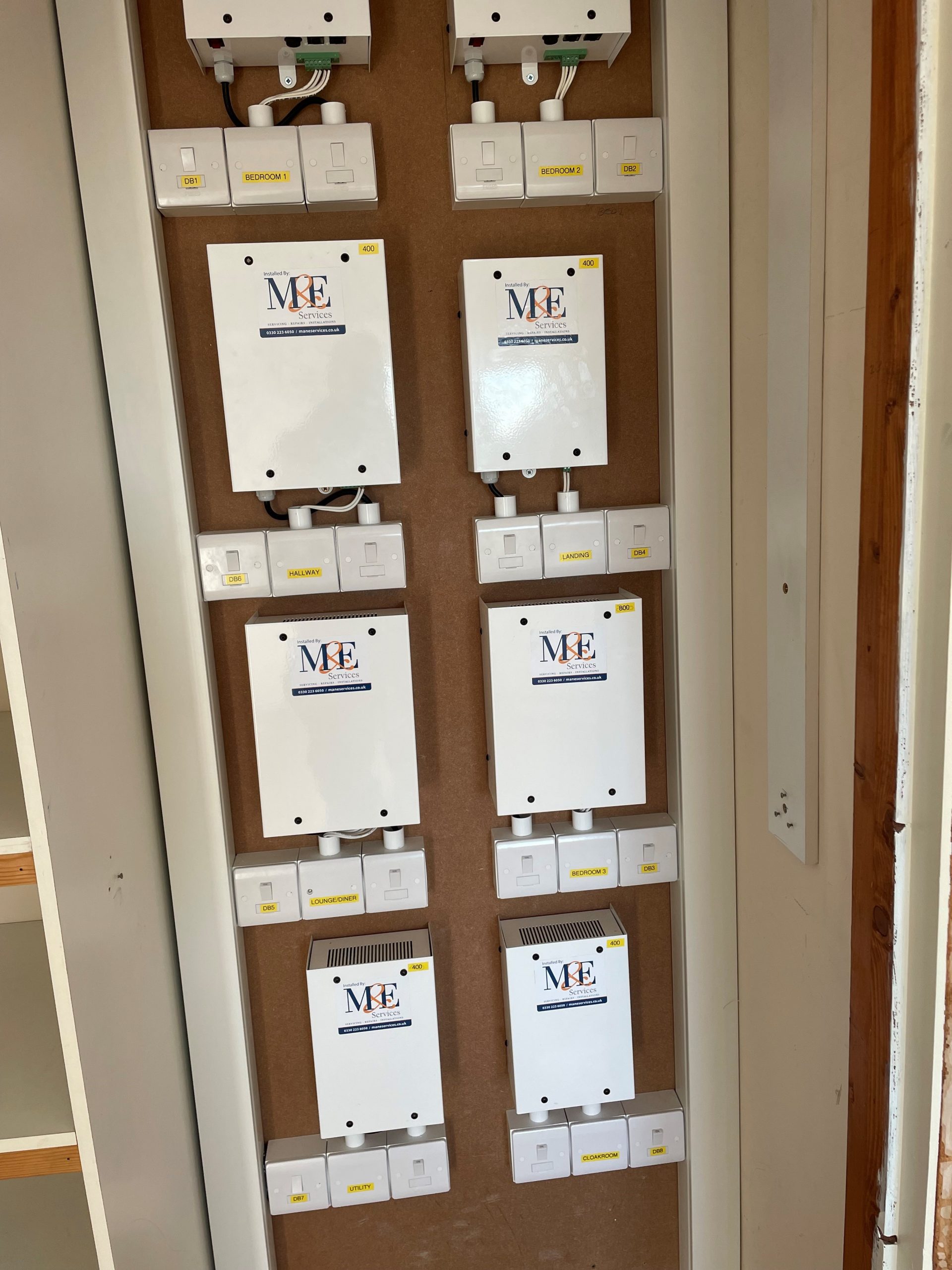
Summary
Despite some hiccups, it all came together in the end and the infrared heating system was completed.
But if you are wanting to install a system for yourselves allow a couple of months for a complete delivery.
We would however purchase our own cable and thermostats in the future, as we can broker better deals directly with our existing suppliers.
Would we use them again, yes, we have already. We have all got better with our expectations and lead time promises.
Infrared Heating Running Costs
As you remember from the other videos, it was always my intention to install an energy logger so we can capture running cost data. The picture below shows a smart meter that we have hooked up that generates a live real time data feed to prove how much energy an infrared heating systems costs to run.

This smart meter is wired to only measure the infrared heating electric usage.
We can see energy used on half hour intervals, through to hourly, daily, weekly, monthly and annually. And what we want to do is see exactly how much this system costs to run compared with what we were sold it on the premise of. We was told that the infrared heating system was as cheap as gas to run, and I did say from my original video , we would prove one way, or another, whether this is correct.
My original thinking was how can it be? 1kW of electricity converts to 1kW of heat.
An explanation of this follows:
Electricity is classed as 100% efficient because there are no consequential losses.
Lets think of a gas boiler to further explain this. We calculate gas boiler efficiencies as 100% minus the heat lost via the flue, resulting in very modern efficient gas boilers being 94% (6% therefore is lost) With electric there is no flue, therefore ANY and ALL electric systems are 100% efficient.
So back to the running costs of the infrared heating system. The video goes through an explanation of the electricity usage data we have captured.
In basic form, we multiply the kW useage for the period of time we are looking at and multiply this by 15p, which at the time of writing this is the average price per kW a normal householder is paying. Everyone’s on slightly different rates, I understand that, but I’ve taken the mean average.
So 450 kilowatts multiplied by 15p per kilowatt equates to £67.50.
The Standardized Test Conditions
We have been maintaining an average of 19 degrees celsius inside the property during the day and 15 degrees overnight.
The property is EPC C so fairly good, not best, but most of the UKs housing is less than this
The readings
October 2021
In October 2021 the infrared heating system used 450kW.
October was quite mild with the average ambient temperature being around 7 degrees celsius. See image below
So 450 kilowatts multiplied by 15p per kilowatt meant a running cost of £67.50 for the month.
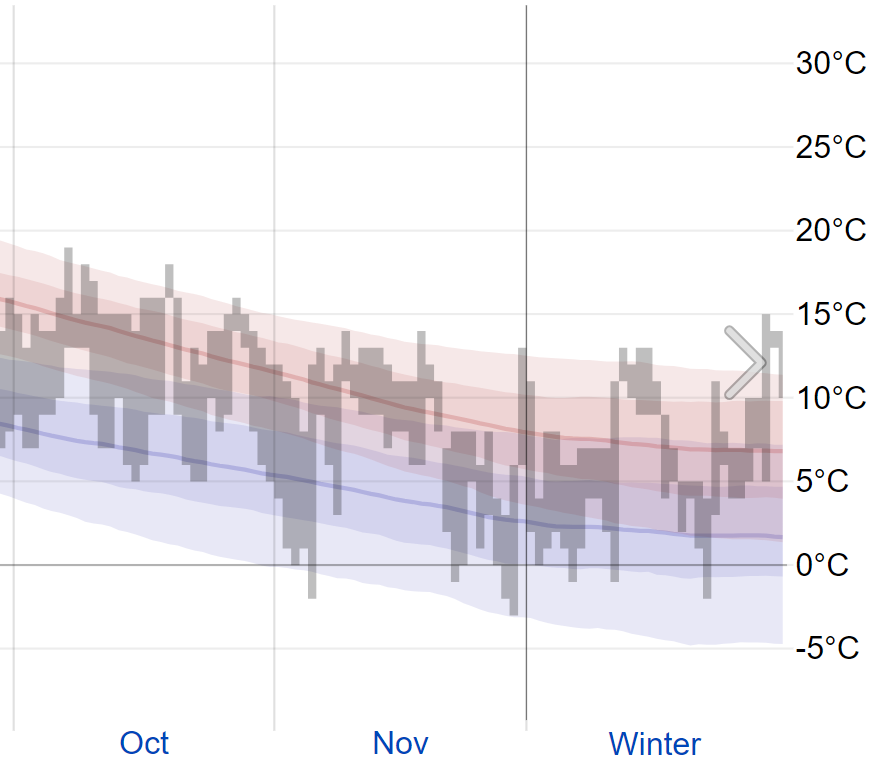
November 2021
In November 2021 the infrared heating system used 736kW.
The average ambient temperature in November being around 5 degrees celsius. See image below
So 736 kilowatts multiplied by 15p per kilowatt meant a jump to £110.40 for the month.
December 2021
In December 2021 the infrared heating system used 1004kW.
The average ambient temperature in November being around 3 degrees Celsius, at worse. See image below
So 1004 kilowatts multiplied by 15p per kilowatt meant another jump to £150.60 for the month.
See below data graph
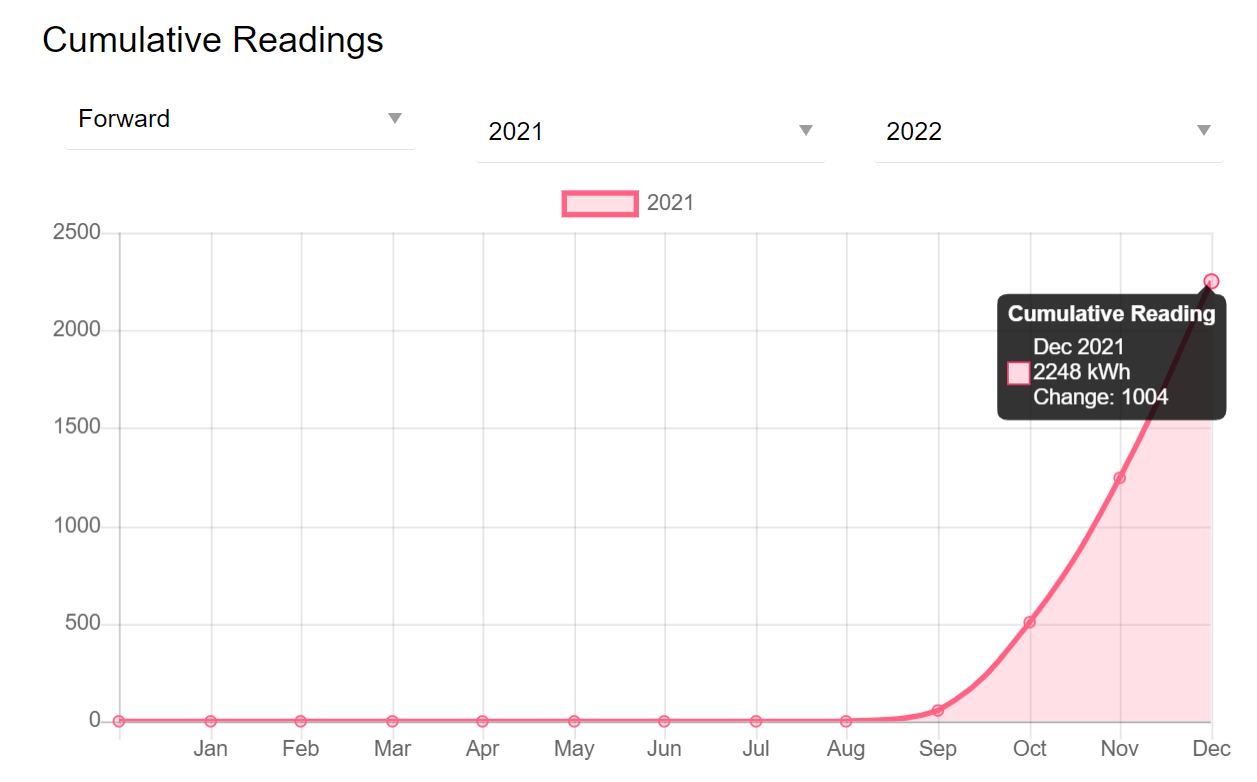
I then reviewed the EPC register, you can search for the EPC on any property that has one. I found an EPC that had recently been carried out just prior to the property purchase, so this showed guide running costs prior to having the infrared heating. The EPC shows an annual yearly energy cost of £1,438 pound for the year.
What to point out on this really is an EPC uses a standard algorithm to calculate an estimated cost hence the word, or stress the word, estimated. Everyone who lives in a property uses their energy, their hot water and their heating very differently. But the algorithm uses an average. So what I’ve done is find an average on another property of a similar size and thermal standard, that’s on mains gas.
So, the property I found that was similar, and on mains gas for the heating showed an annual kW usage of 877kW.
Now, the readings that we’ve taken do not include hot water. I’m only measuring heating. So you’ve got to add, say 3000 kilowatts per year to heat the hot water that we’re using in this property as well.
So our conclusion, is that it is not as cheap to run as gas and closer to traditional electric heating, which is one of the most expensive heating systems to run you can have.
The Caveat
The benefit again at the property where we have install the infrared heating system is that it has Solar PV and the Feed-In-Tariff is far in excess of the bills. So they’re actually making money. Their energy is for free.
The customers incentive for installing the infrared heating was that they just wanted to get rid of the hideous looking electric panel heaters which we did. The customers have been delighted with the look and feel of the system since day one. We installed knowing the Solar PV would be providing the power and the feed-in-tariff would supplement the running cost.
However, if you have not got Solar PV to offset the running costs then this system will not save you money in the running costs.
Summary
So in summary, this system should not be considered, in my own opinion, as a replacement for anything gas. But if you are off the gas grid and you are on electric or LPG, then it’s certainly a contender. It is also aesthetically pleasing and the heat that it generates is comfortable and it’s really nice. There are a lot to the installation that you need to consider too. If you are doing a refurb, an extension or a new build, these are the best times to consider this system.
So I hope this post has been helpful. If you have got any questions, any concerns, you need any advice on how to install it, please reach out.
Below is a related link that you might find useful:
Heat Pump Design, Installation & Servicing
Boiler Services
Boiler Services
Same day boiler servicingHeating Services
Heating Services
Same day heating servicesPlumbing Services
Plumbing Services
Same day plumbersElectrical Services
Electrical Services
Same day electriciantel
office
M&E Services (Lincs) Ltd t/a M&E Services, Red Lion Quarter, Red Lion Street, Spalding, PE11 1SX
registered office
M&E Services (Lincs) Ltd. 20-22 Wenlock Road, London, England, N1 7GU. Company No: 14666876. Registered in England and Wales.
